|
Glass making became an important
local industry when French Huguenots from Lorraine, in
north east France, came here to escape religious
persecution in the early 17th century. There were
plentiful supplies of the raw materials that were needed
to produce glass, including coal, fireclay and sand.
Initially the fuel for the furnaces was wood but this
changed to coal as wood became scarce.
The first glasshouse in the area is believed to be
Coleman’s Glasshouse at Lye, which was built in the
early 1600s. Glass of the highest quality was produced
at Amblecote, Wordsley and Brierley Hill.
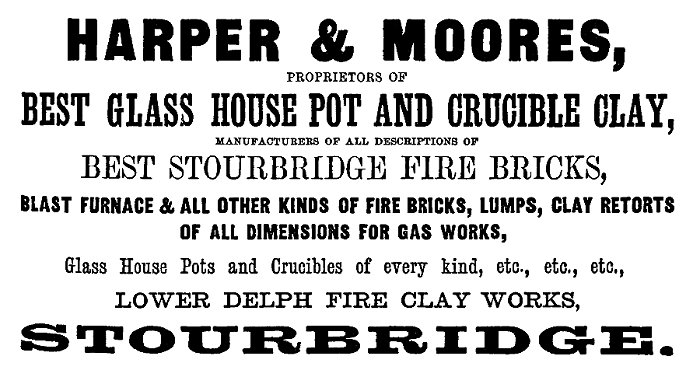
An advert from 1876.
By the end of the century,
glassmaking had spread to Dudley, where it was an
important industry. By the middle of the 19th century,
over 60 glass makers were working in Dudley and the
surrounding area.
The best surviving and most
complete example of a glass cone is the Red House Cone
that was built around 1790. Only three other complete
glass cones survive in the UK. They are at Lemington,
near Newcastle upon Tyne, Catcliffe in Yorkshire and
Alloa in Scotland.
Although all kinds of glass
products were made in the Stourbridge area, the industry
greatly suffered due to a failure to modernise, foreign
competition and changing tastes. Very little of the once
prominent industry now remains. |
| The Dixon family began making glass products
at the end of the 17th century in Dixon’s Green,
which is probably named after them. One member
of the family, Hugh Dixon, became wealthy from
the proceeds of the business, so much so that
Hugh and his wife Joyce, who were married on the
2nd November, 1701, had a lovely house built in
Priory Street, then called Sheep Street. The
building is still there, standing next to the
building that once housed Dudley’s museum. It is
a lovely house and carries the date 1703 with
the initials ‘D’ and ‘H. J’ so this was possibly
their first proper family home.
The house was Grade II listed on the 14th
September, 1949. |
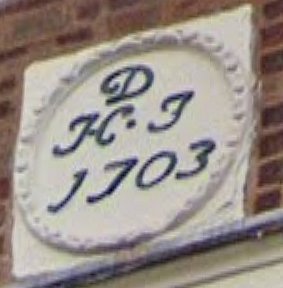
The plaque on the front of
the house. |
|
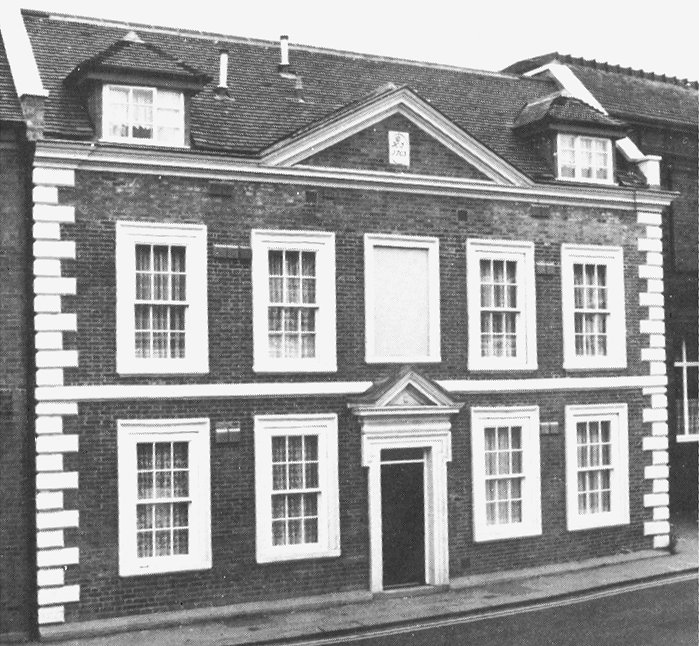
Hugh and Joyce Dixon's House. |
|
Hugh was the first known glassmaker in
Dudley. He was a white glass maker, whose glass house
was in his father's grounds at Dixon’s Green. At the
time, glass making was a precarious business, which
resulted in Hugh being declared bankrupt in 1713.
After the bankruptcy, the Dixon
family sold their old mansion house and glassworks at
Dixon’s Green to Jonathan Green, a glass maker. In the
late 1740s, Jonathan constructed a new glass works on
the site, which continued to operate until 1793 when his
son, John, replaced it with a new structure. In 1829 the
glass works was run by Messrs. Davies and Hodgetts, but
had to be abandoned in 1834 because of subsidence caused
by coal mining. The business then moved to the Red House
Glassworks in Wordsley.
Jonathan Green also ran Springsmire
Glasshouse, at Scotts Green, from the early 1730s until
the late 1740s when his son John took over. In the late
1760s it seems to have closed.
Hollyhall Glasshouse
There was a glassworks in Holly
Hall, called Hollyhall Glasshouse. In the 1750s it was
owned by John Keeling, who like Hugh Dixon, lived in
Sheep Lane. The factory was taken over by George Ensell,
in 1786, but within 16 months it became bankrupt and
closed. Between 1787 and 1803, the business was run by
Zachariah Parkes. In 1828 Joseph Stevens purchased the
glassworks and ran the business until 1837 when he moved
his business to Coalbournhill Glassworks.
Hollyhall Glasshouse was then
leased to Edward Page who ran the business until 1852,
when it closed. By 1886 the factory had been
demolished.
Dudley Flint Glassworks
The glassworks was built on the
site of the old Horse Pool in Stone Street Square, by Abiather Hawkes, in the 1780s. By 1794 Abiather's sons
Thomas and George had taken over. The firm’s products
consisted of high quality enamelled ornamental ware and
coloured glass, much of which was exported, particularly
to Russia and America. The factory closed in 1843 during
a depression in the industry. In 1886 part of the cone
collapsed and the site was cleared. Abiather Hawkes was
Mayor of Dudley in 1824 and his son, Major Thomas Hawkes
of Himley, became the Tory Member of Parliament for
Dudley on the 28th February 1834. He resigned from his
seat in 1844.
Phoenix Glass Works
Phoenix Glassworks was built on the
east side of Hall Street by Phillip Penn in 1780.
Phillip died in 1781 and the factory was then run by his
two sons, Bate and William, who traded as Penn and Sons,
hop merchants and glass men. William ran the glassworks,
while Bate ran the hop merchants. The glass works was
enlarged in 1798. By 1820 the business had been
purchased by Thomas and Isaac Badger, who owned many
other businesses and local housing. They traded as
Badger Brothers and Company, cut glass manufacturers. In
1859 the employees at the glassworks went on strike and
were locked-out. The glassworks closed and in 1886 it
was converted into a foundry.
Castle Foot Glass Works
The factory stood at the north
eastern end of Tower Street, along the northern side of Downing Street,
now part of The
Broadway. It was built between 1780 and 1789
by Benjamin Cooke, Joseph Price and James Wood, who were
partners. The partnership was dissolved in 1820 when
Benjamin Cooke and Joseph Price left the business and James
Wood went into partnership with Joseph Guest & Edward
Guest, who were nail makers. The business then became
Guest, Wood and Guest. Joseph Guest is remembered
because of the Guest Hospital which received a large
endowment from him.
In 1846 the Glassworks was sold to
Henry Homer and John Renaud, who presented a glass
goblet to Georgina, Countess of Dudley when she
officially opened the fountain in Market Place. Henry
Homer later left the business, which continued to
operate until 1899, when it closed after an industrial
dispute. The buildings were demolished in 1902.
|
|

The location of Castle Foot Glass Works. |
|

Castle Foot Glass Works in
Downing Street. From 'Dudley As It Was, by G.
Chandler and I. C. Hannah. |
|
Sheep Lane Glassworks
Little is known about this
business. It stood off Priory Street on the site now
occupied by the Town Hall. In 1770 it was owned by
Richard Keeling, but had closed by the 1830s.
Eve Hill Glassworks
Nothing is known about the Eve Hill
Glassworks until the business was taken over by Josiah
Lane in 1888. At the time he had a glass factory in
Birmingham, which was in a bad state of repair, so he
came to Dudley, because coal was cheaper there. All kinds
of glassware for every day use was manufactured at Eve
Hill including cut glass tableware, lamp glasses, fancy
glass globes, paraffin gas globes, chimneys for paraffin
lamps and fancy
shades for electric light fittings. They also made
paperweights and glass panels for doors with pictures
etched on them. They were called Enamelled Pearl Glass
and can be seen in many houses and railway stations
throughout the country.
In 1904, Josiah died and the
business was taken over by Josiah junior, his son. At the time,
the firm, now known as Joseph Lane and Son Limited,
specialised in a wide range of coloured and decorated
lampshades and employed 65 people. By the early 1920s
the business was failing due to a loss of trade. Josiah
junior died in 1932 and three months later the factory
closed. It was the last surviving glassworks in Dudley.
|
|
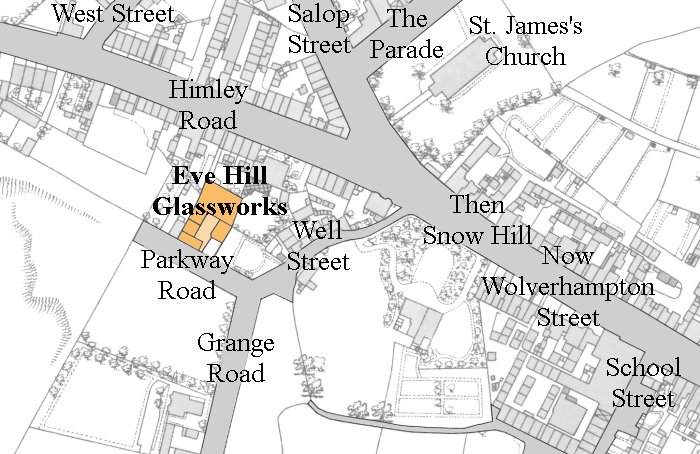
The location of Eve Hill
Glassworks. |
|
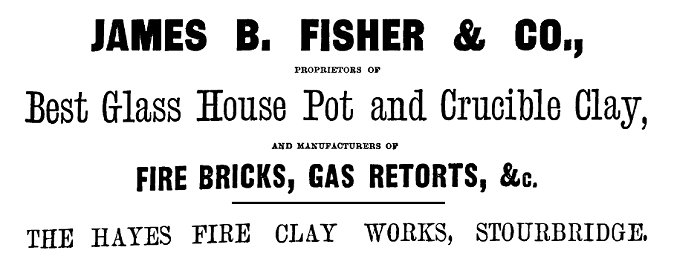
An advert from 1876. |
Thomas
Webb and Sons
Thomas
Webb & Sons was based at Wordsley Glassworks and
Dennis Glassworks, in Stourbridge. It began in
1829 when Thomas Webb became a partner in Webb
and Richardson, that was formed to acquire Wordsley glassworks. The business was run by
three partners; Webb, Benjamin Richardson and
William Haden Richardson.
In 1833 Thomas Webb’s father, John Webb,
entered the glass industry by going into
partnership with John Shepherd at the
neighbouring White House Glass Works. John Webb
died in 1835 and Thomas inherited his father's
share in Shepherd and Webb.
In 1837 Thomas Webb opened a new glass works
at Amblecote and in 1842 sold his share in Webb
and Richardson to his two partners in the
business. In 1850, Thomas Webb’s second son,
Thomas Wilkes Webb, joined the firm as a clerk
and the firm exhibited a wide range of table and
decorative glass at the 1851 Great Exhibition,
winning a medal for cut glass.
In 1855 the company moved to Dennis
Glassworks and in 1859 Thomas Wilkes Webb,
became a partner. Thomas Webb retired in 1863
and his eldest son, Charles, also became a
partner. The firm then became Thomas Webb and
Sons.
In 1869 Thomas Webb died and was succeeded by
his son, Thomas Wilkes Webb. Thanks to Thomas’s
efforts, the firm gained a world wide reputation
for fine crystal and coloured glass. In the
catalogue for the 1878 Paris international
exhibition, the company is described as the
best maker of glass in the world. Thomas was
made a Chevalier of the Legion of Honour.
Walter Wilkes Webb and his brother Charles
Webb became joint Managing Directors and Charles
F. Wedgwood joined the Board of Directors.
Thomas Wilkes Webb retired due to bad health and
died at the early age of 54 in 1891. Walter
Wilkes Webb retired due to ill health in 1899
and in the same year, Charles Webb retired.
In the First World War, the firm specialised
in electric light bulbs, glass tubing and glass
rod and also continued to make tableware. In
1930 the firm became part of Henry G. Richardson
and Sons, of Wordsley Glass Works. |
|

An advert from 1876. |
|
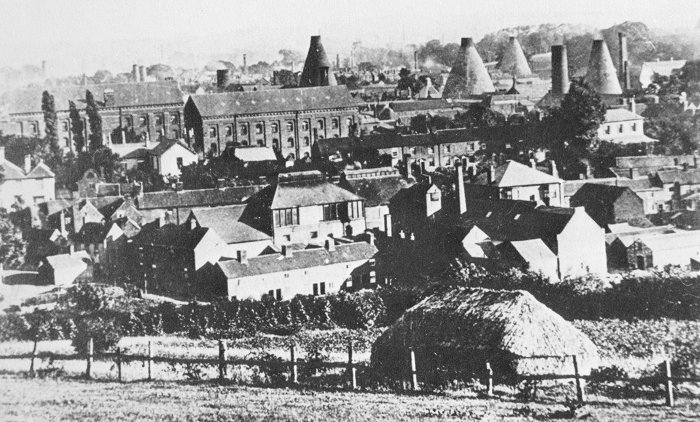
Some of the many glass cones
that dominated the area around Wordsley in 1924.
From an old postcard. |
 |
Return to the
previous page |
|